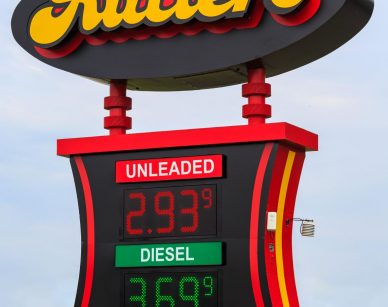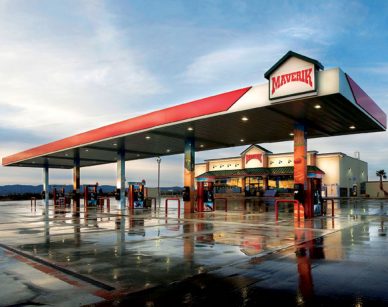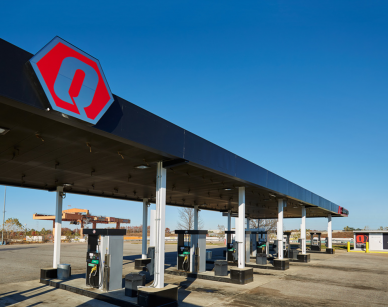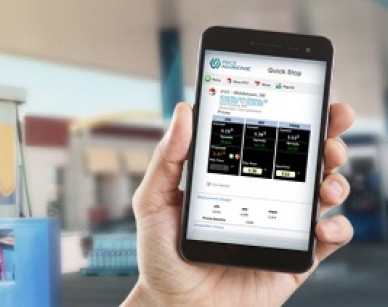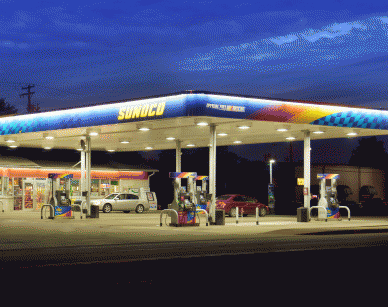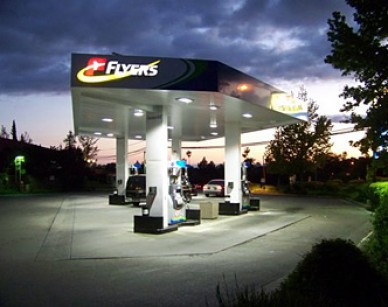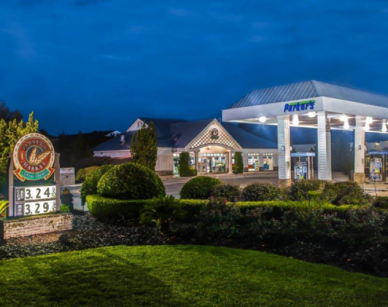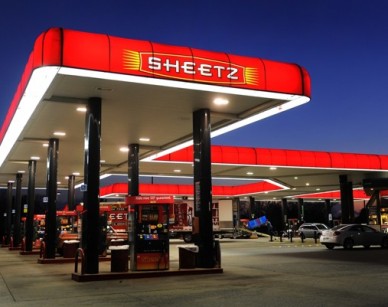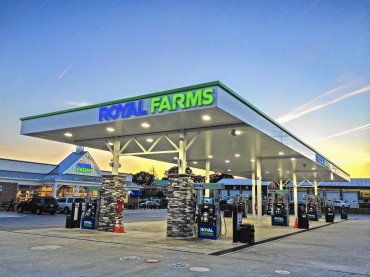
Royal Farms Plows Operational Costs Down and Drives Profits Up
Client: Royal Farms
Location: Mid-Atlantic Region
Number of Stores: 250+
Royal Farms convenience stores dot the Mid-Atlantic region offering freshly prepared foods, convenience items, and value-priced fuel. With retail fuel being the largest revenue driver at more than 250 locations and significant profits reliant on well-timed penny price changes, Royal Farms needed to more efficiently and effectively manage fuel prices. Partnering with PriceAdvantage, the retailer took a simple, three-step approach to do just that.
Step 1: Fuel pricing decisions were centralized and made at the home office.
Step 2: Skyline electronic price signs were installed, enabling store managers and employees to conveniently update fuel prices from inside the store.
Step 3: Fuel price changes were automated using PriceAdvantage fuel price management software, which empowered the company to change prices at all 250+ stores within minutes instead of days and confirm that the changes took place.
“We saved half a penny per gallon, driving record fuel sales and profitability in the first year. This was largely due to automation with PriceAdvantage software and Skyline electronic price signs.
Rob Rinehart, Director of Retail Petroleum
Results
With stores in Delaware, Maryland, Pennsylvania and Virginia, the company struggled to regulate prices and implement a single-minded pricing strategy across the region, which stunted fuel profitability and gallons performance. Although the company received daily competitive pricing surveys through PDI’s competitive report, several stores would inevitably fail to submit their daily reports. Sometimes it would take days to gather the necessary information from lagging stores. “We would have to call back three times to speak to the store manager. It was taking two people half a day every day to get through the fuel pricing process,” recounts Rinehart.
Partnering with PriceAdvantage, Royal Farms restructured fundamental operations and streamlined key processes to maximize overall gross profit on a per store basis. The first step was to put fuel pricing strategy back in the control of the home office. This improved pricing consistency and increased profits significantly.
Manual price changes presented additional challenges. First of all, it took 12–72 hours on average for a price change to be implemented. Often, if a price change was announced on Friday evening, the change would not be implemented until Monday morning. Lost revenue estimates were staggering. Secondly, changing the price signs manually took employees away from their most important task (serving customers) for more than 30 minutes. Thirdly, worker’s compensation claims related to physically updating price signs chipped away at profits.
Rinehart implemented Skyline’s electronic price signs so prices could be changed from inside the store. Employees no longer had to brave wet or icy conditions or bear summer’s stifling heat and humidity to update prices. Stores embraced the new electronic signs. “Soon, other stores began asking when they would be getting these signs,” said Rinehart. The solution increased convenience for in-store employees, minimized injury risks, and curtailed customer-facing disruptions, allowing employees better serve customers.
The human factor could not be ignored either. Delayed price changes and data entry errors prevented the company from realizing higher profits. “We discovered that 25–50 percent of the stores had not made price changes from the previous day,” recalls Rinehart. “And, once a month a store would enter a price like $.25, and we’d be selling fuel at a quarter for half a day.” To make matters worse, some store managers arranged unsanctioned “friends and family hour” during which time fuel prices were deliberately discounted.
Clearly, the company needed to find a way to better regulate store operations and safely expedite and confirm price changes.
Rinehart automated price changes in a closed-loop system using PriceAdvantage fuel price management software. This allows Rinehart to make price changes to all 250+ stores in a matter of minutes, and receive confirmation that the changes took place. “We were able to calculate the increase in profitability with the electronic price signs, but adding the fuel pricing software is when we saw the real returns,” said Rinehart. “There is an art to fuel pricing. You can’t replace your strategy with an algorithm. You can, however, gain a strong competitive advantage by automating the execution of your strategy.” He added, “This market is a penny-up, penny-down game. PriceAdvantage gives me all the information I need to create the optimal price for each store, and then have it posted at the street quickly.”
Royal Farms expected and achieved tangible, measurable results from their modernization and automation efforts. “We now have market knowledge, a centralized strategy, confirmation of price changes and evidence to prove it. What used to take 12–72 hours per store now takes less than an hour for all 250 stores,” stated Rinehart. “We saw a return on our investment in half the time I had originally estimated. We made changes that let us focus on beating the competition and maximizing our profitability for every store, every day.”
The modernization project also improved corporate culture, an unexpected secondary effect. By removing barriers, simplifying processes and increasing transparency, store managers are more compliant, shifting their positions from “Corporate will never know,” to “Let’s get it done.” Store managers have embraced the changes because the modernizations have made their lives easier and because there are enforceable consequences for noncompliance.


